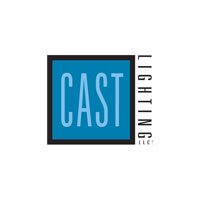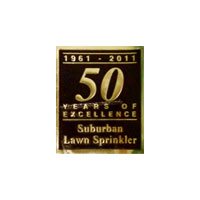
If you’ve ever looked out at your lawn and wondered, “Does it really look as green and healthy as it should?”—you’re not alone. Knowing whether your grass is getting enough water (but not too much) can be a bit of a guessing game for many homeowners. And while New England weather is full of surprises, your lawn care routine shouldn’t be.
At Suburban Lawn Sprinkler Co., we’ve helped countless homeowners strike the right balance, and we’re here to help you do the same. Let’s break down the signs of under-watering and over-watering and show you how smart irrigation systems can make lawn care way less stressful.
What Does Your Lawn Really Need?
Most lawns need about an inch to an inch and a half of water per week, including rainfall. But here’s where it gets tricky—that number can shift depending on your soil type, the kind of grass you have, the sun exposure, and even how recently your lawn was fertilized.
If you don’t have a smart irrigation system in place, it’s very easy to accidentally overdo it—or not water enough at all.
Signs Your Lawn Isn’t Getting Enough Water
Some watering issues are subtle, but others practically scream for attention. Here’s what to watch for if you suspect your lawn is drying out:
The Color Looks Off
Grass that’s not getting enough water loses that vibrant green tone and starts to turn dull blue-gray or brown. That’s a sign it’s going dormant—or worse, dying.
Footprints Stick Around
Walk across the grass. If your footprints or mower tracks linger for a while instead of bouncing back, it’s probably too dry and lacking elasticity.
Dry, Cracked Soil
Try digging a small patch. If the soil underneath is bone dry and crumbly, your grass roots are struggling to reach moisture.
Patchy or Bare Areas
Dry spots tend to show up first in sunny, sloped, or wind-exposed parts of your lawn. If certain zones are always browning, it’s a red flag that those areas aren’t getting enough consistent water.
Signs You’re Overwatering (Yes, That Happens Too)
On the other end of the spectrum, some lawns suffer because they’re too wet. It’s easy to think more water = greener, but too much moisture can suffocate roots and cause a host of problems:
Soggy Soil
If the ground feels soft and squishy long after watering—or after it hasn’t rained—it’s too wet.
Yellowing Grass
Oddly enough, too much water can cause the same color change as not enough. Over-saturated soil starves roots of oxygen, leading to yellow or limp grass.
Fungal Growth and Mushrooms
Mushrooms love moist conditions. If they’re popping up overnight, chances are your lawn is staying damp for too long.
Thatch Buildup and Disease
Overwatering encourages shallow root systems and thatch accumulation. That, combined with humid conditions, can invite disease and mold.
So, What’s the Fix?
The first step to correcting any watering issue is recognizing what your lawn is telling you. The second step? Adjusting your routine—or better yet, upgrading your tools.
Water Less Frequently, But More Deeply
A thorough soak a couple of times per week is better than a quick splash every day. Deep watering encourages roots to grow further into the soil, which makes your lawn more drought-tolerant in the long run.
Water Early in the Morning
The best time to water is just before sunrise. It minimizes evaporation and gives the grass time to dry before nightfall, reducing the risk of disease.
Make Seasonal Adjustments
Don’t keep the same watering schedule year-round. Your lawn needs more water in July than it does in October. If you’re not changing your watering plan with the seasons, that’s likely part of the problem.
Let Technology Take Over: Why Irrigation Systems Make Life Easier
If you’re tired of dragging hoses around or guessing when to water, an irrigation system might be the best investment you can make in your yard.
At Suburban Lawn Sprinkler Co., we install custom irrigation systems that do the thinking for you. Our systems are designed with:
Zone-Specific Control
Not every part of your yard needs the same amount of water. Shady areas stay wetter longer, while sunny slopes dry out faster. We break your yard into zones, so each section gets the right amount of water at the right time.
Rain and Soil Moisture Sensors
Watering during a rainstorm? That’s a thing of the past. Our systems use smart sensors to pause watering if it rains or if the soil is already moist enough.
Smartphone-Controlled Systems
Our smart controllers let you manage your system from your phone. Going on vacation? No problem. You can tweak your watering schedule or turn it off remotely.
Better Efficiency
Smart watering means you use less water overall saving you money on your utility bills while keeping your lawn looking lush and healthy.
Don’t Wait for Your Lawn to Struggle
One of the best things you can do for your yard is pay attention to the signs early. A dry or oversaturated lawn won’t bounce back overnight, but with a few smart changes—and the right irrigation support—you can restore its health and appearance before the damage becomes permanent.
If you’re not sure whether your lawn is getting the right amount of water, let us help. Suburban Lawn Sprinkler Co. can evaluate your current setup, recommend improvements, and install an efficient, automated system that gives your lawn exactly what it needs—no more, no less. Contact us today at (508) 872-2727 or visit us online for more information!








